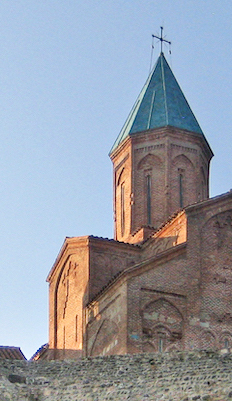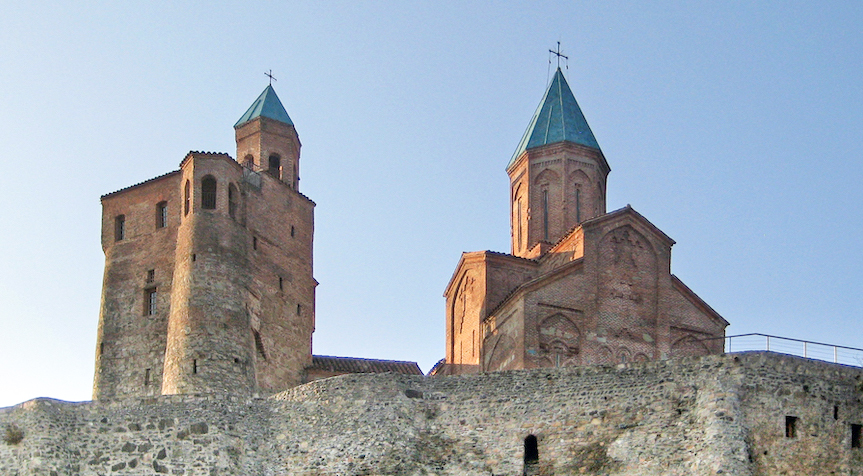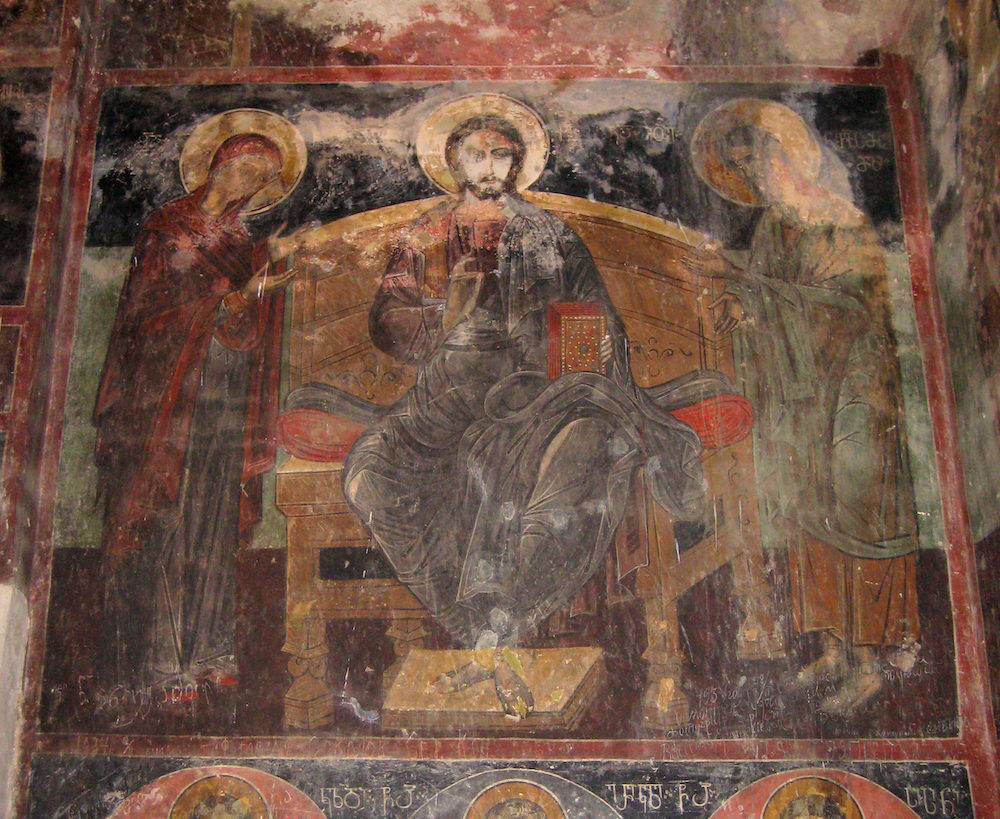
Feel free to add tags, names, dates or anything you are looking for


The city of Gremi was founded in 1466, and soon became the capital of the Kingdom of Kakheti in Eastern Georgia. In the sixteenth century it was one of Georgia’s most important cities.
It saw its heyday during the long reign of King Levan of Kakheti (1520-1574), who significantly contributed to the urban development of Gremi. In 1616, the city suffered an invasion by Iranian forces under Shah Abbas II. It was restored but never regained its former prosperity. Later it was abandoned and fell into a state of disrepair. Archaeological excavations revealed the site of the old city, which covers an area of approximately 0.5 square km. It consisted of a citadel, a royal quarter, and a trade district.

The Church of the Archangels and dwelling tower
The citadel is enclosed by buttressed defensive walls. On the top of the hill overlooking the site stand the Church of the Archangels and a three-storey dwelling tower in the middle of the citadel. The church was built by King Levan in 1565 as his final resting place. It is a cross-domed structure constructed of brick – the main building material in late Medieval Kakheti.

The Church of the Archangels from the south
The church is distinguished for its lofty proportions and the high drum of the dome. Its façades are decorated with slight rectangular and pointed arched recesses that reflect the influence of Iranian Safavid architecture. The burial vault of King Levan is located under the floor in the south-western corner of the church.

Depiction of the Deesis in the interior of the Church of the Archangels
The interior walls of the church are decorated with well-preserved murals painted by the monk Zakharia soon after completion of the construction. The paintings include depictions of the Twelve Great Feasts, the Passions of Christ, alongside images of the prophets, the Evangelists, the Warrior Saints and other martyrs, as well as a portrait of King Levan with a model of the church in his hands. It is one of the best examples of sixteenth-century Georgian art.

The tower standing next to the Church of the Archangels is built of brick and stone. It has two large rooms on the lower floors, and a belfry on top. The royal quarter of Gremi was occupied by the King’s palace and its subsidiary structures, including a bath house and a domed pavilion with a fountain and a small pool. The trade district was the largest part of the city. It housed a large covered market of rectangular plan and a caravanserai. A canal running from the Lopota River supplied the city with water, which was distributed to buildings by means of ceramic pipes.
The Church of the Virgin built by Matarsa
The Church of the Virgin in the trade quarter is a domed building of an unusually complex inner structure. It was constructed by Matarsa, the secretary of King Alexander (son of King Levan), in 1595 as a burial chapel for his wife. Several domed and single-nave churches stand in the north-eastern part of the trade district.
The bath house (on the left) and the museum in the trade quarter of Gremi
In 2011 and 2012, extensive restoration works were carried out in the trade quarter of Gremi. One of the restored buildings was allocated as a museum, which exhibits a rich collection of artifacts found during archaeological excavations in Gremi.